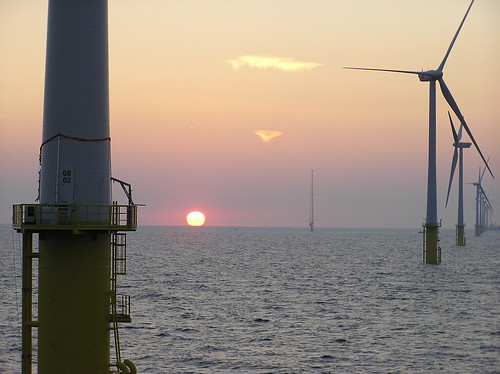There were 3 airlines that had very interesting and innovative sustainability strategies: Continental Airlines, Southwest Airlines, and JetBlue.
Continental Airlines was featured on Fortune Magazine as one of 10 "Green Giants," large corporations that are putting sustainability at the forefront of their operations. They've spent more than $16 billion to make their fleet more fuel efficient, and even employ environmentalists to work alongside engine manufacturers to increase aircraft fuel efficiency, to design green terminals, and to employ recycling practices. Continental was also the first commercial carrier to demonstrate the use of biofuels as aircraft fuel in early 2009.
Similar to Continental, Southwest Airlines has implemented recycling practices to recycle anything from waste to batteries to used oil. They have also installed winglets on their fleet of aircraft and installed avionics systems to plan more fuel efficient flight routes. However, what is most impressive is that Southwest has marked one of their planes as a "Green Plane." The Boeing 737-700 Southwest flight WN222 is an in-service aircraft running commercial routes with the latest innovations in eco-friendly and sustainable materials including carpeting, seat covers, etc. to test the durability of these products and their effect on the customer experience.
JetBlue Airlines has started a new program, Jetting to Green, with initiatives to reduce their environmental impact. JetBlue has made strides to install energy efficient lighting and lighter seats on aircraft, eliminated disposable headphones on flights, recycling jet fuel, etc. They also invite their customers to volunteer through the "One Thing That's Green" program, holding different events (like planting trees) for customers to sign-up for, and to offset their carbon by donating to CarbonFund. JetBlue also partners with Honeywell, Airbus, and International Aero Engines to further the research of biofuels as alternative jetfuel.
The airline industry accounts for 3% of total global emissions and is expected to grow by 5% each year. Recent reports have also shown that airlines spew more CO2 that previously estimated, potentially releasing 1.5 billion tons per year by 2025 (the European Union, consisting of 27 countries and 457 million people, emits 3.1 billion tons per year currently). It is nice to know that there are some airlines pushing the way towards more sustainable air travel by implementing initiatives and practices that reduce their carbon footprint any way they can.
My hope is that these initiatives continue and that the future of the airline industry becomes a collaboration of airports, airplane makers (like Boeing and Airbus), and airlines themselves to work together to develop a more sustainable approach to air travel.











